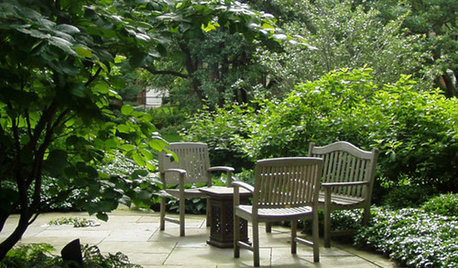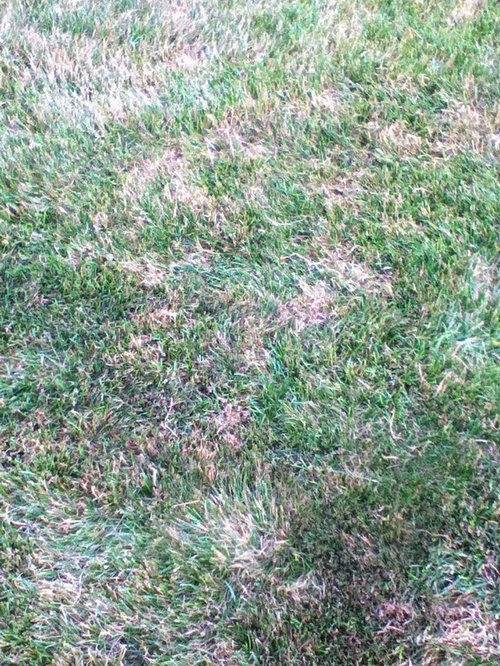Brown Patches in Lawn
mosmitty
10 years ago
Related Stories

GARDENING GUIDESHow to Fix Bare and Yellow Lawn Spots
Restore your turf’s good looks by reseeding unsightly patches
Full Story
LANDSCAPE DESIGNCalifornia Says Goodbye to the Sprawling Ornamental Lawn
New state rules will effectively limit turfgrass to 25 percent of the landscape in most new and renovated yards
Full Story
GROUND COVERSGive Your Lawn a Taste of the Wild
Consider the joys of an irregularly trimmed meadow lawn: It’s ecofriendly, visually interesting and still good for romping
Full Story
EARTH DAYThe Case for Losing the Traditional Lawn
Work less, help the environment and foster connections by just saying no to typical turf
Full Story
SAVING WATERHouzz Call: Are You Letting Go of Your Lawn?
Many facing a drought are swapping turf for less thirsty plantings. If you’re one of them, we’d like to hear about it
Full Story
LANDSCAPE DESIGNGet Along With Less Lawn — Ideas to Save Water and Effort
Ditch the mower and lower your water bill while creating a feast for the eyes with diverse plantings and gathering places
Full Story
GARDENING AND LANDSCAPINGYour Yard: Are You Ready to Lose the Lawn?
Save time and water with good-looking alternatives to turf grass
Full Story
MOST POPULARMeet a Lawn Alternative That Works Wonders
Carex can replace turfgrass in any spot, is low maintenance and adjusts easily. Add its good looks and you’ve got a ground cover winner
Full Story
GRASSESHow to Rock a Lawn
Weekend Project: The key to healthy grass begins with the soil. If turf works for you, here’s how to fix it and keep it looking its best
Full Story
LANDSCAPE DESIGN7 Low-Maintenance Lawn Alternatives
Turf isn't the only ground cover in town. Get a lush no-grass lawn with clover, moss and other easy-care plants
Full StoryMore Discussions








tiemco
dchall_san_antonio
Related Professionals
Wrentham Landscape Architects & Landscape Designers · Bridgetown Landscape Architects & Landscape Designers · La Marque Landscape Architects & Landscape Designers · Washington Landscape Architects & Landscape Designers · Surprise Landscape Contractors · Bound Brook Landscape Contractors · Dixon Landscape Contractors · Gloucester Landscape Contractors · Parkland Landscape Contractors · Pompton Lakes Landscape Contractors · Setauket-East Setauket Landscape Contractors · Ansonia Landscape Contractors · Clinton Swimming Pool Builders · Malden Swimming Pool Builders · San Juan Capistrano Swimming Pool Buildersgardencare
dogfriendly123
dchall_san_antonio
mosmittyOriginal Author
dchall_san_antonio